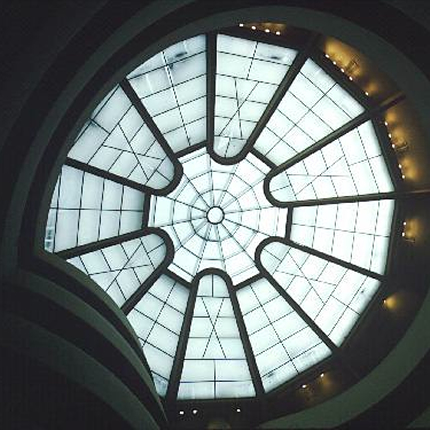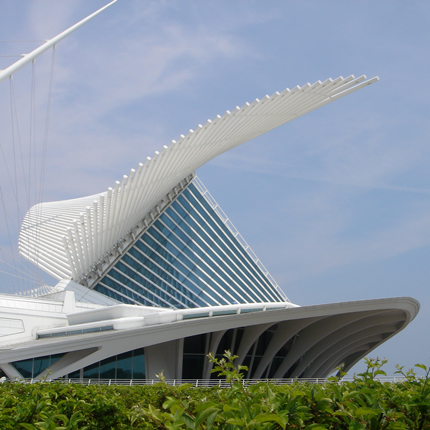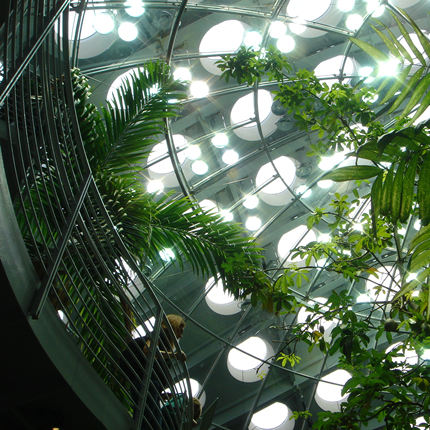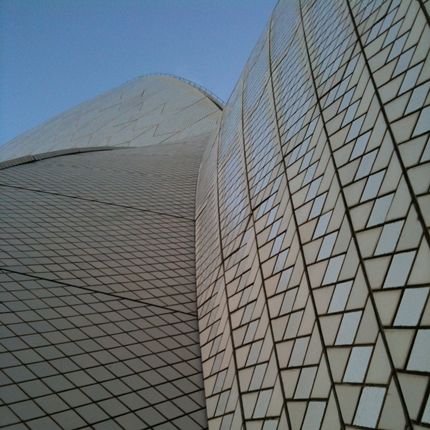Four Public Buildings
built between 1959 and 2008 |
The Creation of Public Space |
criteria for their making and use |
the value of public spaces in the 21st century |
| While it varies greatly around the world, the role of public space is changing in our time. From various vantage points this can be seen as good or bad. In this writing, I prefer to think of it as a market that just is yet has a dynamic feedback driven relationship between how public spaces function and how those buildings which define them are made. The four buildings profiles here cannot be taken as comprehensive yet can be illustrate some useful examples and principles. |
| In modern parlance, public spaces can be thought of as a form of social networking. Think of the experience of sailing on the Queen Mary to Europe rather than flying as an example. Or, Times Square at New Years Eve. Why not fly to Europe or watch the new year roll in on television? As virtual, smart technology becomes more ubiquitous and provides greater fidelity, our understanding and use of physical also evolves. Neither replaces the other and both can augment the other. This effects the design of buildings as well as how they are used. |
|
|
these works in context of the past 50 years |
| When any building such as these four is built it requires and extraordinary effort on the part of a large number of people and organizations. In these examples, it also requires a commitment of 7 to 18 years from awarding the commission to opening of the building to the public. And then, the real work of operating a complex enterprise has just begun. The USE phase of design-build- use, over time become the greatest creative act of all. |
|
|
common and unique design elements of these four works as examples of public buildings: |
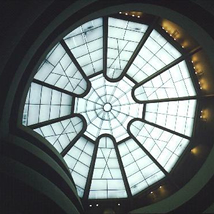 |
| 1959 The Guggenheim Museum |
click on picture to go to my article on this work |
|
| These works have many attributes in common and some strong differences. They spread over half a century in their making and each is a signature piece of the city they inhabit. Of the four, I am the most familiar with the Guggenheim having visited it a dozen times over 50 years. Also, I was at Taliesin when it was being constructed and have some experience of the controversies it raised at the time. The Sydney and Milwaukee works I have seen only once and both were brief visits at that. I have been to the Academy of Sciences twice for several hours duration, the first time a behind the scenes tour courtesy of Jill Tarter. Until Sydney, I knew the Opera House only as an icon and little of the work done before and after it by Jorn Utson. I have studied the work of Calatrava and Renzo Piano for several years by books and articles. Milwaukee was my first visit to a Calatrava building and the Academy the second Piano building I have been in the first being a brief nighttime tour of the redone Fiat works in Turin. |
| Of the four, the Guggenheim and Sydney Opera have logged a half a century and 34 years, respectively, of operation and have settled into their settings and cultures. The Milwaukee Museum and the Academy of Science are relatively new works. The Guggenheim and Milwaukee Museums have a focus on visual arts, although not entirely. Sydney Opera is a multi-venue performing arts center with over 1,500 performances a year by various companies and is visited by seven million people a year. The San Francisco Academy of Sciences is the only one in the world which houses an aquarium, planetarium, natural history museum and scientific research programs under one roof. It can be said that the Guggenheim, which took 17 years to design and build, launched the modern museum movement. The Sydney Opera, taking 18 years from conception to use, is one of the most famous icons in the world. The Milwaukee addition by Calatrava was completed in 7 years and is unique as moving architecture. The Academy of Sciences was completed in 10 years with perhaps the closest fit between a complex program and the design of a building demonstrating green construction and technology as a deliberate aspect of the program. |
|
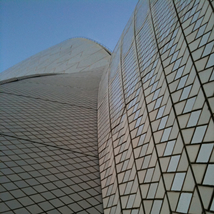 |
| 1973 The Sydney Opera House |
click on picture to go to my article on this work |
|
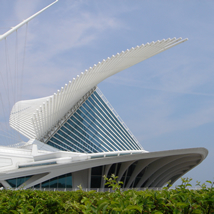 |
| 2001 The Milwaukee Museum |
click on picture to go to my article on this work |
|
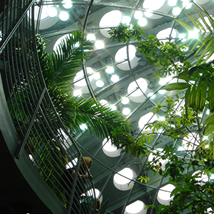 |
| 2008 The California Academy of Sciences |
click on picture to go to my article on this work |
|
the making of a public space: |
appropriate use of a public space: |
the economy-ecology of a public space: |
the social legacy of a public space: |
other historical examples and narratives: |
posted:
February, 10, 2011 • updated: February, 13, 2011 - 9:17 AM @ Nashville Studio |
|
|
|
|
E |
D |
L |
L |
|
|
|
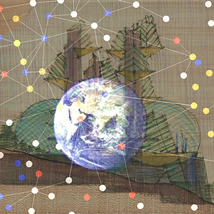 |
R |
A |
|
Purpose of tsmARCHITECTURE
|
|
|
